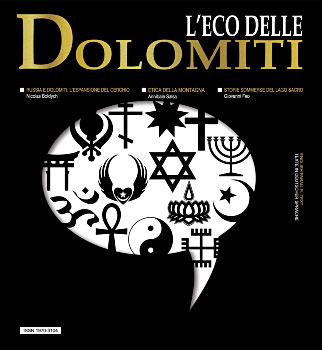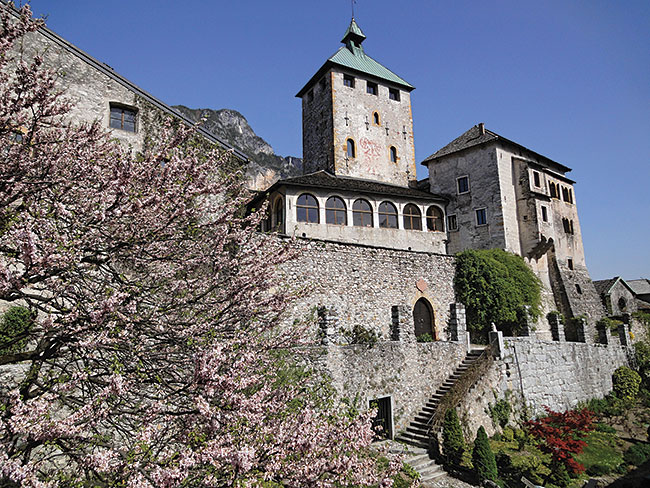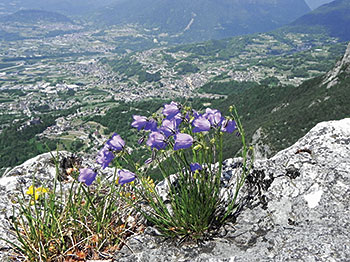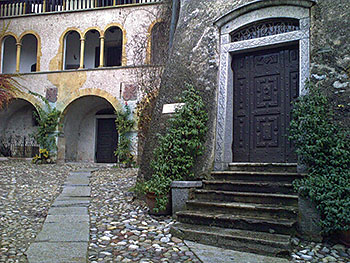

CASTEL IVANO
Annalisa Dolzan and Luca De Feo

In the village of Ivano Fracena, in Trentino, but almost on guard from the near Veneto region, Castel Ivano dominates a slice of Valsugana.
Basking in the view you can enjoy from its rooms, or observing it like a sentinel is a natural reaction fr all those who plunge in the atmosphere of this ancient castle after crossing its walls.
Passing its large gate is like entering one of the romantic engravings in which the castle is portrayed, often in the background, with the river Brenta in the foreground. And yet, the frame into which we advance is real, complete with pinetrees and geranium, which welcome you in a building that reminds of its former functions: provisions were stockpiled on the right; hay in front of them, and a little further, in the little inner square they watered horses. “Here” and “There” as Alice in her Wonderland would probably call them, are the names of the two main buildings.
The whole charm, however, does not cover the echoes of sabres and cannonballs. The coat of arms is visible despite the large park surrounding it. This castle is Lombard, hence medieval, but it served as fortress until World War II. During World War I an important command stationed here: Valsugana was one of the most contended fronts.

It is greatly to the credit of the Staudacher family, therefore, that the castle was so well preserved and that they cured the “wounds” due to the structure being so long “in actual permanent service”.
The photographs of a few decades ago make us appreciate the effort of bringing merlons, walkways, halls and gates to their past splendour. Today this bulwark shines in interior harmony and in one with the landscape. The tower – the original unit – is surrounded by later buildings suggesting the presence of a tiny, busy village all within the walls.
A staircase leads to the main floor: even in the upper halls austerity and functionality prevail. Visitors will perceive them while walking down the corridors, bare down to their essence, observing the few portraits or stroking the spare, solid furniture that often is the setting of art shows. The collections of inkwells and wooden statues of the 15th, 16th and 17th century are on permanent exhibition.
The view, stretching from the overlooking mountain chain to the wide valley and where it is not difficult to imagine approaching armies and travelling delegations to be announced, is what embellishes the halls, like the one of the arches and the one of the stones, nowadays prestigious places for meetings and conferences.

Now however, in this corner of Triveneto, it is the peaceful cultural and industrial development that this natural lane between the sea and the Dolomites is rather suggesting, from this privileged observation point, on an industriousness that has been passed on and spread from the village over the centuries. Anyway, the coat of arms that dominates on the tower bears the wheels and the axles of a wagon.
Even in the Eleonora Duse Hall, where the muse of D'Annunzio stayed, you can breathe a practical and cosy atmosphere, in certain ways cloistered, almost to condense the climate of these lands where Castel Ivano is set.